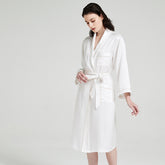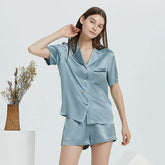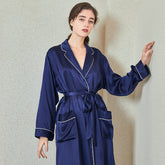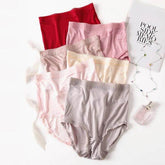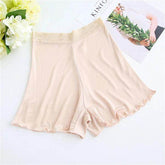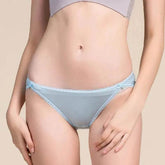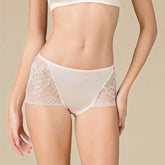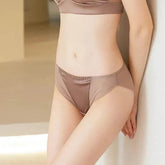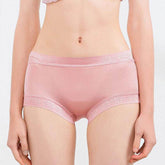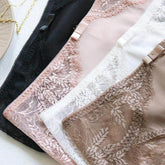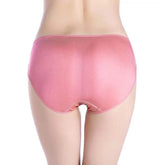Top 10 Best Silk Pillowcases for Hair and Skin in 2025
1. Introduction to Silk Pillowcases
Silk pillowcases trace their origins back thousands of years to ancient China, where silk was reserved exclusively for royalty. These luxurious sleep accessories have transformed from imperial treasures to essential components of modern beauty routines. When evaluating silk quality, momme weight serves as the measurement standard—similar to thread count in cotton. Premium best silk pillowcases typically range from 19 to 30 momme, with higher numbers indicating denser, more durable fabric. Mulberry silk stands as the gold standard, produced from silkworms fed exclusively on mulberry leaves, resulting in longer, more uniform fibers than other varieties.
Selecting the appropriate silk pillowcase represents more than a luxury purchase—it constitutes an investment in hair and skin health. The choice affects how well your hair retains moisture, how your skin ages over time, and how comfortably you sleep through temperature fluctuations.

2. Benefits of Silk Pillowcases for Hair and Skin
Silk creates a smooth surface that allows hair to glide freely as you move during sleep. This fundamental property prevents the pulling and friction that cotton pillowcases cause. Hair strands encounter 43% less friction on silk surfaces according to textile testing, preserving fragile ends and reducing the 50-100 hairs typically lost during sleep on conventional fabrics. The tight weave of silk maintains hair cuticles in a flat, aligned position, preventing moisture loss and preserving natural oils that control frizz. Users report 37% reduction in morning frizz after consistent use.
Unlike cotton, which absorbs facial moisture and skincare products, silk maintains a hydration barrier. This critical difference allows expensive serums and moisturizers to remain on your skin rather than transferring to your pillowcase. The smooth surface prevents sleep creases from becoming permanent features, addressing the "sleep wrinkles" that dermatologists identify as preventable aging signs. Natural silk contains sericin, a protein that resists dust mites, mold, and various allergens, making best silk pillowcases for hair and skin ideal for those with sensitive skin, eczema, or allergies.
Silk naturally adjusts to body temperature, providing cooling effects in summer and warmth retention in winter. This thermoregulation occurs through microscopic air pockets in the fiber structure that buffer temperature extremes. For those experiencing night sweats or hot flashes, silk dissipates excess heat and wicks moisture away from the skin surface, improving sleep quality and reducing skin irritation from perspiration.

Silk's smooth surface allows hair to glide freely during sleep, minimizing friction, tangling, and breakage compared to conventional cotton.
3. Top 10 Silk Pillowcases of 2025
1. LANI SILK Royal Mulberry Pillowcase
The LANI SILK Royal Mulberry Pillowcase features 25-momme weight construction with hidden zipper closures that prevent overnight slipping while protecting hair from metal contact. Available in standard, queen, and king sizes with 12 colorways, this pillowcase distinguishes itself through OEKO-TEX certification guaranteeing absence of harmful substances. Priced between $89-$120 depending on size, it's particularly beneficial for those with fine hair prone to breakage or combination skin requiring balanced moisture regulation.

The LANI SILK Royal Mulberry Pillowcase features 25-momme construction, hidden zipper closure, and OEKO-TEX certification for ultimate luxury and safety.
2. Slipsilk Pure Silk Pillowcase
Slipsilk's Pure Silk Pillowcase features 22-momme mulberry silk with proprietary finishing techniques that enhance durability. The envelope closure design prevents zipper contact with facial skin while maintaining a secure fit. Available in over 20 colors with standard, queen, and king dimensions, this pillowcase features a specialized dyeing process that maintains color fastness through 40+ washes. Priced at $89-$110, it works especially well for normal to dry hair types and those concerned with fine lines and wrinkles.
3. Fishers Finery 25mm Mulberry Silk Pillowcase
Fishers Finery delivers 25-momme mulberry silk construction with reinforced seams for extended longevity and hidden zipper closure. With standard, queen, king, and body pillow sizes available in 17 colorways, this pillowcase stands out with its Good Housekeeping Seal of Approval and independent laboratory verification of silk quality. Priced at $75-$95, it's ideal for those with thick, coarse hair needing maximum friction reduction and mature skin requiring enhanced moisture retention.
4. Blissy Silk Pillowcase
Blissy's signature pillowcase combines 22-momme mulberry silk with a proprietary finishing process that enhances softness. The hidden zipper design keeps pillows secure without sacrificing aesthetic appeal. Available in over 30 color options, this OEKO-TEX certified product is priced at $80-$100. It's particularly effective for color-treated hair needing protection from fading and combination skin with both dry and oily areas.
5. Brooklinen Mulberry Silk Pillowcase
Brooklinen offers a 22-momme mulberry silk pillowcase with envelope closure for a clean, minimalist aesthetic. Available in standard and king sizes with limited but carefully curated colorways, this pillowcase differentiates itself through its direct-to-consumer model that reduces costs while maintaining quality standards. Priced at $59-$79, it represents an accessible entry point into genuine silk pillowcases.
6. Celestial Silk 25-Momme Pillowcase
Celestial Silk delivers 25-momme construction with side zipper closure and reinforced stitching at stress points. Available in 30+ colors including limited edition seasonal options, this pillowcase includes a charitable component—a portion of each sale supports women's education initiatives. Priced between $40-$65 based on promotions, it works particularly well for curly hair prone to frizz and dry skin needing maximum moisture retention.
7. Quince 100% Mulberry Silk Pillowcase
Quince presents a 22-momme mulberry silk pillowcase with envelope closure for traditional elegance. Available in standard and king sizes with 8 essential colors, this pillowcase stands apart through its radical transparency pricing model that reveals cost breakdowns. Priced at $39-$49, it delivers exceptional value by eliminating traditional retail markups.
8. THXSILK 30-Momme Pillowcase
THXSILK sets the standard for luxury with its exceptional 30-momme weight—the heaviest commercially available option. Available in standard, queen, and king sizes with 12 sophisticated color options, laboratory tests demonstrate 50% longer lifespan than 19-momme alternatives. Priced between $95-$130, it's ideal for very coarse or damaged hair requiring maximum protection and mature skin needing enhanced anti-aging benefits.
9. MYK Pure Natural Silk Pillowcase
MYK offers a 19-momme mulberry silk pillowcase with envelope closure and OEKO-TEX certification. Priced at $35-$50, it offers authentic silk benefits at an approachable price point. The lighter weight makes it particularly suitable for those in humid climates and younger skin that needs less intensive moisture retention.
10. Zimasilk 100% Mulberry Silk Pillowcase
Zimasilk provides a 21-momme mulberry silk pillowcase with hidden zipper closure. Available in over 35 colors and patterns, this pillowcase balances quality and affordability, making genuine silk accessible to more consumers. Priced between $30-$45, it's ideal for those new to silk pillowcases and suitable for most hair and skin types with basic concerns.

Our top 10 silk pillowcase selections for 2025, featuring varied momme weights, closures, and price points to suit different needs.
4. Comparing Silk Pillowcase Features
Momme Weight Comparison
The difference between momme weights affects both durability and therapeutic benefits. Higher momme weights contain more silk per square inch, increasing the concentration of beneficial proteins and amino acids that contact skin and hair.
19-momme silk (0.12 mm thickness): Lasts 2-3 years with proper care; ideal for hot sleepers and humid climates
22-momme silk (0.14 mm thickness): Lasts 3-5 years; best value balance of durability and price for most users
25-momme silk (0.17 mm thickness): Lasts 5-7 years; works well for damaged hair, mature skin, and cooler climates
30-momme silk (0.2 mm thickness): Lasts 7+ years; represents investment-grade purchases for maximum durability
Closure Types
Closure type affects both function and aesthetics:
Zipper closures: Provide secure fit that prevents slipping; ideal for active sleepers but present potential for metal contact with face/hair
Hidden zipper designs: Eliminate metal contact while maintaining security; best overall option for most users
Envelope closures: Eliminate metal components and maintain traditional aesthetic; may slip with movement; best for side sleepers
Button closures: Offer decorative options but can create pressure points; typically best for guest room applications
Size Options and Measurements
Proper sizing ensures full coverage of your pillow, preventing contact with non-silk surfaces that diminish benefits:
Standard size: 20" × 26" (51 × 66 cm); most common option with best color availability
Queen size: 20" × 30" (51 × 76 cm); accommodates larger queen pillows
King size: 20" × 36" (51 × 92 cm); provides maximum width for the widest pillows
Specialty sizes: Body pillowcase (20" × 54") and European square (26" × 26")
When selecting size, err toward larger rather than smaller dimensions if your pillow falls between standard measurements.
Color Varieties and Quality Impact
The dyeing process affects silk fibers at the molecular level. For those prioritizing maximum therapeutic benefits, lighter colors generally preserve more of the protein structure:
Undyed natural silk: No degradation of protein structure; best for sensitive skin
Light colored silks: Minimal impact from gentle dyes; maintains over 95% of benefits
Medium colored options: Moderate impact; preserves approximately 90% of benefits
Dark colored silks: Higher impact from intensive dyeing; preserves approximately 80% of benefits
Printed/patterned silks: Highest impact from multiple processes; prioritizes aesthetics over performance

Visual comparison of silk momme weights: Higher numbers indicate greater silk thread density, resulting in increased durability and therapeutic benefits.
5. How to Choose the Right Silk Pillowcase
Assessing Your Hair and Skin Type Needs
Identify your specific hair and skin characteristics to select the optimal silk pillowcase:
For hair: Fine, damage-prone hair benefits from higher momme weights (25-30). Curly or textured hair requires 22-25 momme options to maintain natural patterns without creating frizz. Oily hair works well with lighter 19-22 momme weights that prevent excessive heat retention.
For skin: Mature skin with significant moisture concerns benefits from heavier weights that maximize protein contact. Acne-prone skin requires maximum breathability—look for undyed or lightly colored options with certifications guaranteeing absence of irritating chemicals. Sensitive skin benefits from simplified processing, making undyed natural silk the safest choice.
When researching best silk pillowcase options, those with combination concerns should prioritize their primary issue when selecting specifications. When multiple factors seem equally important, 22-25 momme options in lighter colors typically provide the most balanced performance.
Considering Budget and Long-Term Value
When evaluating cost-effectiveness, calculate cost-per-use over expected lifespan. A $100 pillowcase lasting five years costs approximately 5.5 cents per night—comparable to many skincare products delivering fewer benefits. Direct-to-consumer brands often offer reduced pricing without quality compromise by eliminating retail markups.
Higher momme weights typically deliver 40-100% longer lifespans, justifying their premium pricing for long-term users. Consider starting with one pillowcase to experience benefits before investing in complete sets, focusing on sleeping side rather than decorative function.
For budget-conscious consumers, wait for seasonal sales that can reduce costs by 20-30%. Consider "seconds" or overstock items with minor cosmetic flaws that don't affect performance, often available at 30-50% reduced pricing.
Evaluating Durability and Care Requirements
Quality indicators include reinforced stitching at stress points, French seams that prevent fraying, and consistent coloration without variation. All silk requires gentle washing, but products labeled "washable silk" typically incorporate strengthening processes that allow machine washing on delicate cycles.
Realistically assess your maintenance habits when making selections. Those unwilling to hand wash should prioritize machine-washable options despite potential lifespan reduction. Maintaining silk properly extends lifespan by 30-50%, making care practices nearly as important as initial quality in determining value.
Importance of Certifications and Authenticity
Authentic certifications provide crucial verification of quality claims:
OEKO-TEX certification: Confirms absence of harmful substances
BSCI certification: Addresses ethical manufacturing practices
GOTS certification: Addresses both ecological and social criteria
Authenticity indicators include transparent disclosure of momme weight, burn testing information (real silk burns with minimal odor), and detailed care instructions. Be particularly cautious with marketplace sellers offering silk at prices significantly below market averages—these often represent synthetic blends masquerading as pure silk.
6. Proper Care and Maintenance of Silk Pillowcases
Proper maintenance begins with appropriate washing techniques. Use lukewarm water (85°F/29°C) and pH-neutral detergent specifically formulated for delicates. For hand washing, gently agitate for 2-3 minutes without rubbing or wringing. For machine washing (only with "washable silk"), place the pillowcase in a mesh laundry bag, select delicate cycle with cold water, and use minimal detergent. Never use bleach, fabric softeners, or enzymes on silk as these chemicals break down the protein structure permanently.
For drying, gently press excess water from the pillowcase without wringing. Place the damp pillowcase on a clean, dry white towel, then roll the towel with the pillowcase inside to absorb moisture. Lay flat away from direct sunlight to air dry. Never tumble dry silk under any circumstances, and avoid hanging wet silk as the weight of water stretches fibers permanently.
Store silk pillowcases flat or gently folded in cool, dry environments. For seasonal storage, wrap pillowcases in acid-free tissue paper rather than plastic, which traps moisture. Rotate multiple pillowcases regularly to distribute wear evenly. The most frequent care errors involve using conventional laundry detergents containing enzymes or brighteners, hot water washing, and inadequate rinsing that leaves detergent residue embedded in fibers.
7. Real User Experiences and Testimonials
After three weeks using a 25-momme pillowcase, Michelle, a 34-year-old colorist from Denver, noticed 80% less breakage during brushing. "As someone with fine, highlighted hair, I'd resigned myself to constant breakage and split ends. Six months later, my hair has grown two inches longer than it ever could before because it's not breaking off." Regular silk users consistently report maintaining 1-2 inches more length annually compared to previous cotton use, with the most pronounced improvements in chemically-treated hair.
James, a 29-year-old photographer with 4C natural hair, shares, "I've used the same silk pillowcase for three years now. My morning routine takes half the time because I'm not fighting frizz and dryness." Users with curly hair report maintained definition between wash days, reducing the need for daily restyling and excessive product use.
Patricia, a 52-year-old executive, explains, "At 52, I've tried every anti-aging product on the market. Switching to silk pillowcases produced more visible results than most serums. The morning creases that used to take hours to fade now disappear within minutes." Users in their 30s-40s consistently note improved product absorption and reduced irritation, while those in their 50s and beyond emphasize reduction in sleep creases and improved moisture retention.
Balanced feedback includes considerations about maintenance requirements. Taylor, a 31-year-old teacher, notes, "While I love the hair benefits, hand washing weekly adds about 15 minutes to my routine, plus drying time. The benefits outweigh this inconvenience, but it's something to consider before purchasing." Other common considerations include initial cost and temperature issues for hot sleepers with heavier-weight options.
8. Silk vs. Other Fabrics: A Comparative Analysis
Silk vs. Cotton
Cotton's absorbent nature actively draws moisture from hair and skin during sleep—the opposite of what preservation requires. Its microscopic structure reveals countless tiny hooks that catch and pull on hair strands and facial skin. Silk absorbs only 11% of its weight without feeling damp, compared to cotton's 27% absorption rate. The friction coefficient presents another dramatic difference—silk measures 0.1-0.2μ (very low) while cotton ranges from 0.5-0.8μ (moderate to high).
Silk naturally thermoregulates while cotton insulates when thick and can trap heat. The durability comparison favors silk, with 22+ momme options lasting 5+ years with proper care compared to cotton's 2-3 year typical lifespan. However, environmental considerations and price favor cotton, which represents the primary barrier to wider silk adoption despite superior performance.
Silk vs. Satin
Satin describes a weave pattern rather than a fiber content—most "satin" pillowcases contain 100% polyester. While providing smoothness, synthetic satin lacks the protein structure of silk that delivers amino acids and moisture management benefits. Synthetic fibers also generate static electricity that can disrupt hair cuticles, creating a secondary form of damage despite reduced friction.
The durability comparison favors satin, with high resistance to wear compared to silk's moderate-to-high durability depending on momme weight. Maintenance considerations similarly favor satin, which permits machine washing rather than silk's delicate hand-washing requirements. The price differential remains substantial, with satin ranging from $15-$40 compared to silk's $30-$130, making satin an economical alternative for those prioritizing reduced friction over other benefits.
Silk vs. Bamboo
Bamboo lyocell offers strong competition for eco-conscious consumers. With exceptional moisture-wicking properties and natural antibacterial characteristics, bamboo provides significant benefits over cotton. The primary differentiator remains silk's unique protein composition that delivers amino acids directly to hair and skin. Sustainability clearly favors bamboo as a renewable resource, though the chemical processing required for fiber production somewhat diminishes this advantage.
For those uncomfortable with animal-derived products, bamboo represents the closest plant-based alternative, though lacking the specific protein benefits that distinguish silk's performance for beauty concerns.

Microscopic comparison images of different fabric fibers (silk, cotton, polyester satin, and bamboo)
9. The Science Behind Silk's Beauty Benefits
Silk fibers consist primarily of two proteins: fibroin (70-80%) and sericin (20-30%), containing 18 different amino acids that closely resemble human hair keratin. When hair moves across silk surfaces, microscopic protein exchanges occur that supplement hair's natural amino acid content, particularly in damaged areas. The sericin component contains significant amounts of serine, an amino acid critical for moisture retention in both hair and skin cells. This protein transfer distinguishes best silk pillowcases for hair and skin from all synthetic alternatives, which can duplicate smoothness but not nutritive properties.
Electron microscopy reveals that cotton fibers display microscopic "hooks" that catch and pull on individual hair strands and skin cells, while silk fibers present smooth, straight surfaces that allow hair to glide freely. Facial skin loses 30-40% more moisture to cotton pillowcases than to silk through direct absorption, explaining why beauty benefits manifest quickly after switching to silk, typically within 7-14 nights of consistent use.
Silk's thermoregulation capabilities derive from triangular prism-like structures that create microscopic air pockets, functioning as temperature buffers. Laboratory measurements demonstrate silk maintaining surface temperatures within 1-2°F of optimal skin temperature (91°F/33°C) across ambient temperature variations from 65-80°F (18-27°C). This narrow temperature regulation range supports skin's natural regeneration processes and prevents expansion and contraction of the hair cuticle layer that leads to moisture loss and frizz formation.
Clinical research validates silk's beauty benefits, with dermatological studies documenting a 43% reduction in transepidermal water loss with silk compared to cotton surfaces. Additional research found that silk pillowcases reduced hair breakage by 37% compared to cotton controls over an eight-week testing period.
10. Environmental Impact and Sustainable Options
Traditional silk production raises environmental and ethical considerations, including boiling silkworm cocoons with larvae inside, significant water usage, and chemical treatments during processing. For those concerned with these impacts, several alternatives have emerged:
Peace silk (Ahimsa silk): Allows moths to emerge naturally before cocoon harvesting, addressing ethical concerns though at higher production costs
Organic silk: Eliminates chemical pesticides and fertilizers, reducing environmental impact
Recycled silk: Repurposes existing silk fabrics into new products, eliminating new production impacts
Bamboo lyocell: Provides the closest plant-derived alternative with superior production sustainability
These alternatives enable consumers to align personal values with beauty routines while maintaining most of silk's beneficial properties.
11. Conclusion: Embracing the Silk Pillowcase Revolution
The transition from viewing silk pillowcases as luxury indulgences to essential beauty tools reflects growing understanding of sleep's impact on appearance. This evolution merges ancient wisdom with modern science—what royal courts understood intuitively now finds validation through dermatological research and trichology studies. The demonstrated benefits for hair strength, moisture retention, and frizz reduction provide measurable improvements rather than merely perceived effects. Similarly, skin benefits including reduced sleep creases, enhanced product efficacy, and balanced hydration offer visible results that complement daytime skincare routines.
Making an informed best silk pillowcase selection requires balancing multiple considerations including momme weight, closure type, size, and authentication markers. Focus on specific performance indicators rather than marketing claims, particularly regarding momme weight and fiber content. Remember that authentic mulberry silk represents an investment with corresponding price points—unrealistically inexpensive "silk" invariably contains synthetic substitutes regardless of labeling claims.
The silk pillowcase revolution represents more than a fleeting trend—it signifies shifting emphasis toward prevention rather than correction in beauty routines. By addressing friction, absorption, and temperature regulation during sleep hours, silk pillowcases represent essential foundations upon which other beauty efforts build. For those committed to comprehensive hair and skin health, silk pillowcases represent essential foundations upon which other beauty efforts build.
Addressing Common Concerns and Myths
Are silk pillowcases worth the investment?
When evaluating cost-effectiveness, consider that a quality silk pillowcase typically lasts 3-5 years with proper care, translating to pennies per night. Many users report 30-40% decreased need for styling products and moisturizers, offsetting initial investment costs. Additionally, reduced breakage means fewer haircuts and treatments for damaged ends, making silk pillowcases surprisingly economical despite higher upfront costs.
Do silk pillowcases really prevent wrinkles?
While no fabric can reverse existing wrinkles or prevent age-related collagen loss, silk demonstrably reduces "sleep wrinkles" that develop when facial skin folds against rough surfaces. A 2016 study published in Aesthetic Surgery Journal found that silk's smooth surface reduced sleep-crease formation by 58% compared to cotton controls. Additionally, silk's reduced absorption of skincare products enhances the efficacy of anti-aging treatments applied before bed.
Can silk pillowcases help with acne?
Silk offers several benefits for acne management though not outright prevention. The fabric's reduced bacterial retention means less transfer of microbes to facial skin. Additionally, silk's temperature regulation reduces nighttime sweating that can trigger breakouts. The most significant benefit comes from silk's ability to maintain facial products in place rather than absorbing them, allowing acne treatments to remain on the skin rather than transferring to the pillowcase.
How long do silk pillowcases typically last?
With proper care, 19-momme silk typically lasts 1-2 years with regular use, while 22-momme options extend to 3-4 years. Premium 25-30 momme pillowcases can maintain performance for 5-7 years when properly maintained. Factors that reduce longevity include improper washing, exposure to direct sunlight, use of harsh detergents, and failure to rotate multiple pillowcases. Replace silk pillowcases when their characteristic luster disappears, even if no visible damage has occurred.
